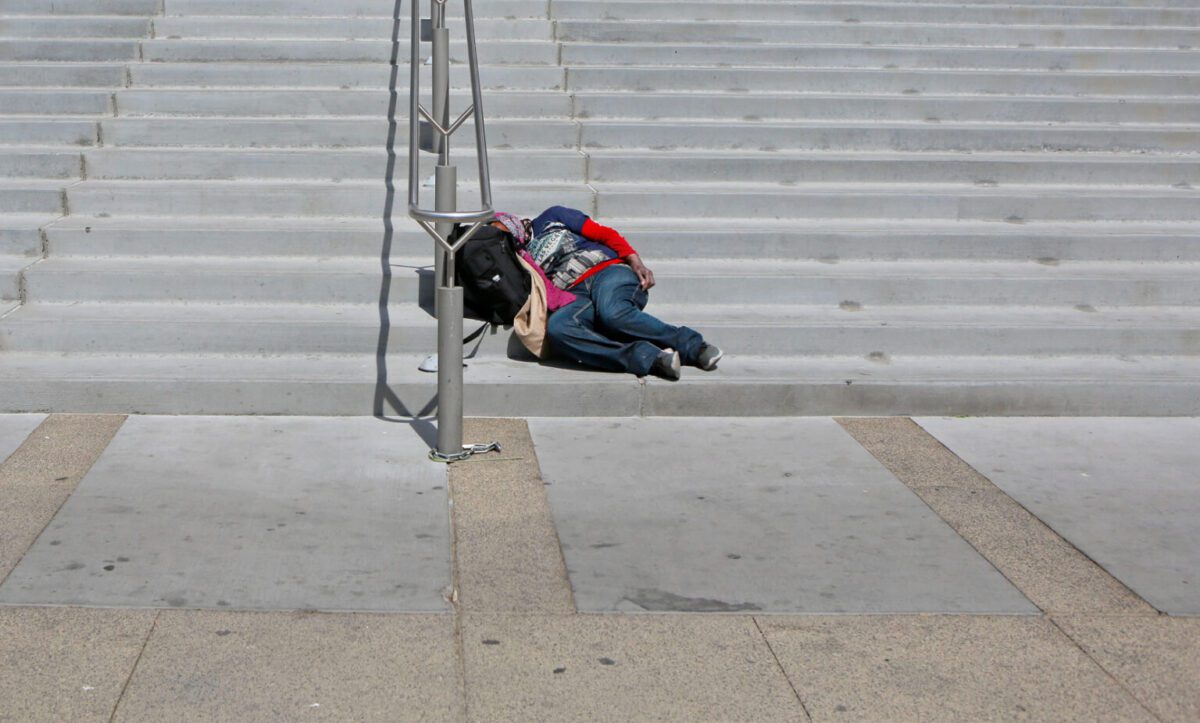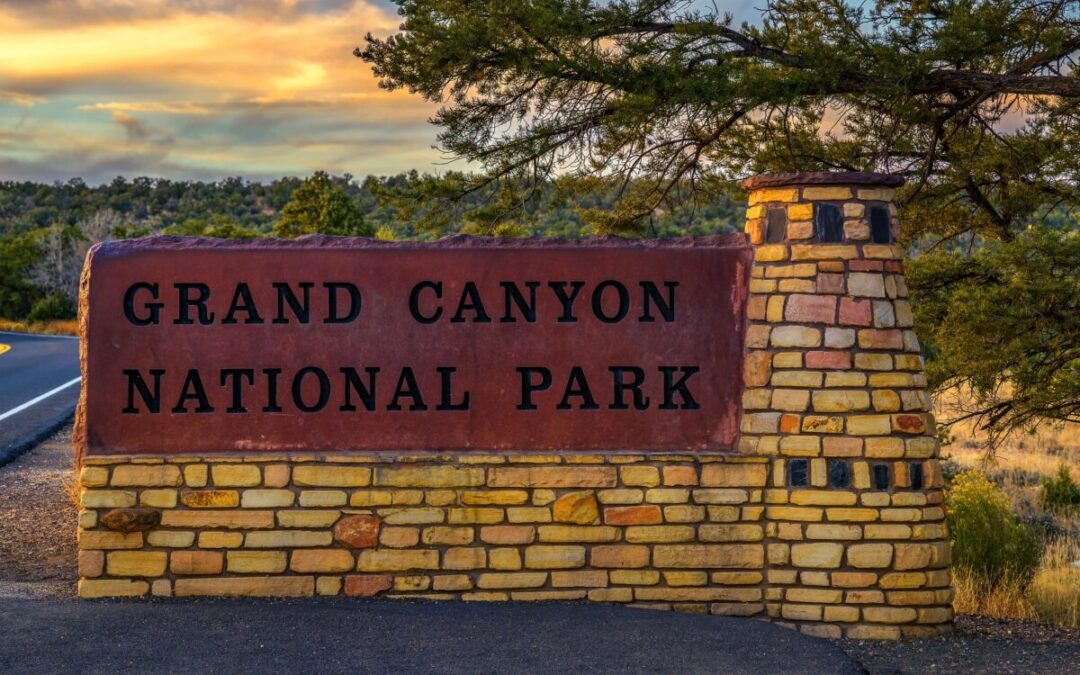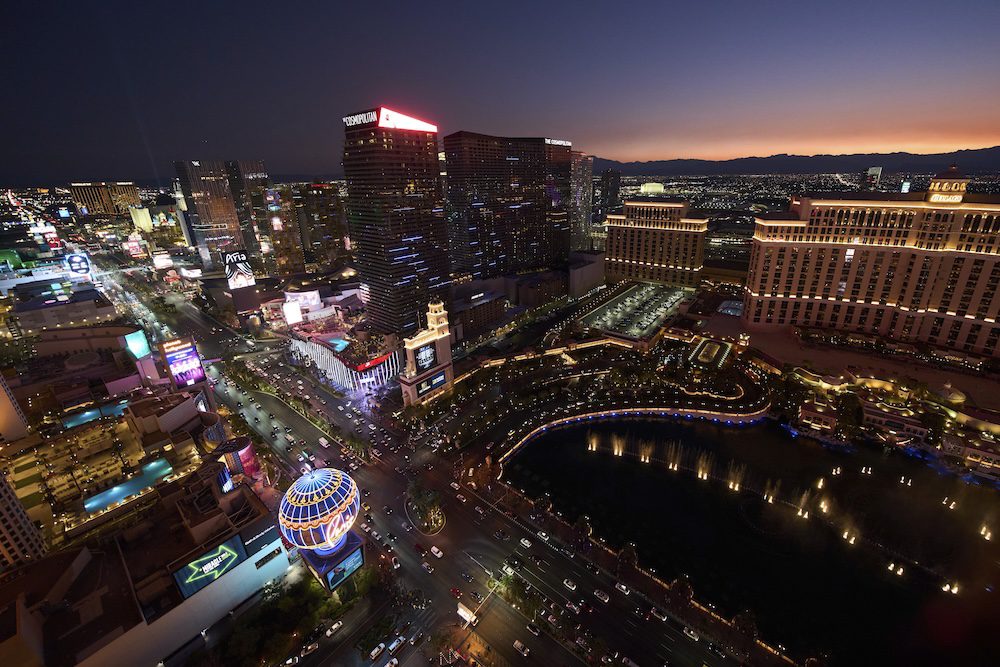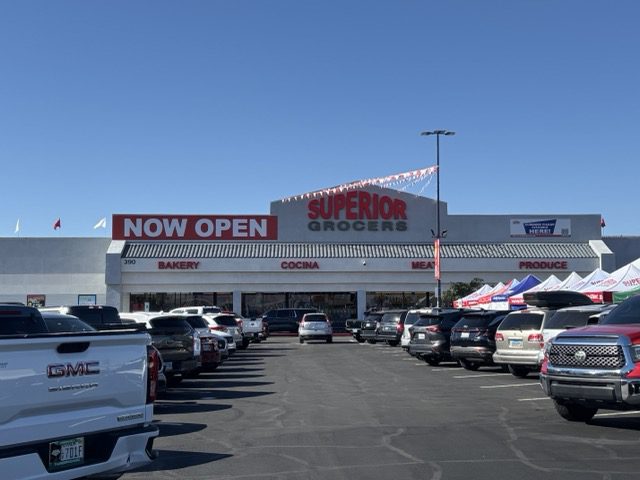
In 2023, Southern Nevada reported 307 deaths resulting from heat-related illnesses. In 2022, there were 165 heat-related deaths in Southern Nevada. (Photo: Ronda Churchill/Nevada Current)
BY: JENIFFER SOLIS, Nevada Current
Despite Nevada having two of the fastest warming cities in the nation — Reno and Las Vegas — the state has taken the least action to protect the public from the impacts of climate change.
On Wednesday, researchers told lawmakers that the severe lack of heat mitigation in Reno and Las Vegas has led to major health consequences for Nevadans. In 2023, Southern Nevada reported 307 deaths resulting from heat-related illnesses, a significant increase from the 165 heat-related deaths in 2022.
“Heat is very much a systemic issue here in Southern Nevada, and it can function to compound existing crises,” said Ariel Choinard, the lead for the Southern Nevada Heat Resilience Lab, during a joint meeting with the Interim Committee on Health and Human Services and the Interim Committee on Growth and Infrastructure.
In Nevada, however, heat has not been addressed in a systematic way, said Choinard. Cities throughout Nevada have taken the least amount of action to protect the public from the impacts of climate change when compared to other cities in the Southwest— a fact backed up by the congressionally mandated Fifth National Climate Assessment last year.
“Cooling centers are activated when the National Weather Service issues an excessive heat warning, but they are our only response to an excessive heat warning. And we don’t know how well this resource functions in our communities, or who it’s really functioning for and when,” Choinard said.
“To get to a cooling center, we are kind of asking people to expose themselves to more extreme heat just to get to the place where they might be able to cool down,” she continued.
No single agency in the state is tasked with recommending heat mitigation strategies, said Choinard, leading to a lack of collaboration and coordination. She recommended a task force on heat that could make recommendations and encourage change around heat response and adaptation.
During community listening sessions, Choinard said Nevadans are seeking systemic approaches to heat mitigation. The most common requests were a prohibition of NV Energy shut-offs in the summer, programs for utility assistance, requiring landlords to weatherize units and upgrade air conditioning units, and more trees and shade structures along sidewalks and at bus stops.
“Although we think about heat as something that can make people sick or even kill them, there are other impacts as well,” Choinard told lawmakers. “There are impacts on people’s mental health, because this is something that is chronically stressful to go through every single day. There’s impacts on domestic violence rates, and maternal and fetal health. There’s such a huge picture of how heat functions in our communities that we need to better understand.”
This month, Las Vegas experienced 11 consecutive days of 110 degrees or higher, the longest streak on record according to the Las Vegas Weather Service. Las Vegas also hit 120 degrees in July, the hottest temperature ever recorded in the city. While there are variables year-by-year, Nevada is seeing a growing trend in death and hospitalizations due to heat, Choinard said.
“Folks face some really bleak trade offs when it gets really hot. We know that people choose between putting food on the table or keeping their homes at a safe and livable temperature,” Choinard said, adding that days of extreme heat strain the body and lead to long-term health consequences.
“Extreme heat can act as a chronic stressor for our communities, and it can also act as an acute shock depending on how long or how severe a heat event is,” she continued.
John Mejia, an associate research professor of Atmospheric Modeling at the Desert Research Institute, said more and more cities are developing climate adaptation plans to make cities more resilient to extreme heat.
Existing heat modeling by researchers in Nevada is available to lawmakers making urban planning policy, said Mejia. DRI is collaborating with Southern Nevada Heat Resilience Lab and others to develop realistic heat mitigation policies, he added.
Part of the issue is the urban heat island effect, a separate phenomenon from climate change -but one that is exacerbated by it – that results in higher temperatures in cities due to the abundance of blacktop and pavement, but many cities are finding solutions.
For example, New York City, Los Angeles, Chicago, Dallas, Denver, Houston, Miami, and Philadelphia have incorporated “cool roofs” into their building codes. Painting roof tops white or “cool roofs” can help reduce heat buildup in cities and rural areas by reflecting heat instead of absorbing it.
“You can get a similar cooling to outdoor irrigation by adopting cool roofs,” Mejia told lawmakers.
Republican state Sen. Robin Titus agreed, calling cool roofs a “common sense” solution.
“That’s been kind of a common sense thing to do for a long time. That you would make these big buildings in hot areas white,” Titus said.
Mejia told lawmakers there are several other solutions that have already been implemented in other Southwest cities, including expanding access to rooftop solar, which has proven to reduce heat by reflecting heat away from roofs, keeping buildings and the surrounding area cooler.
Mejia said that incorporating green infrastructure, such as planting trees, could also be part of Nevada cities’ overall heat mitigation and urban resilience strategy.
Urban canopy has been proven to effectively cool neighborhoods, said Mejia. His own research on existing tree canopy over the Las Vegas metro-area has found several areas of extreme heat vulnerability concentrated in the City of North Las Vegas and eastern Las Vegas.
“We know now where the trees are planted in reality,” Mejia said. “One option is to target tree planting projects in extreme heat vulnerability hot spots.”
This story was originally published by Nevada Current and has been republished under a Creative Commons license.

Regulatory rollback threatens plan to curb NV pollution in national parks
By Mark Richardson A new study revealed vehicle emissions from the Las Vegas area are degrading air quality in national parks and plans to...

All major Las Vegas Strip casinos are unionized, defying national trend
When Susana Pacheco accepted a housekeeping job 16 years ago at a casino on the Las Vegas Strip, she believed it was a step toward stability for her...

Ford seeks to unseat ‘vulnerable’ Republican governor
If Attorney General Aaron Ford wins, he would be the first Black American elected as governor in Nevada. Aaron Darnell Ford made history in 2019...

Superior Grocers opens its second location in Las Vegas
Read this story in Spanish. Lee esta nota en español. Suscríbete a Vegas Somos. A new market opened its doors in the west Las Vegas valley—Superior...

Las Vegas Arts District pushes back on proposed noise curfew
UPDATE AUG. 13: The City of Las Vegas will not pursue a change to the noise ordinance exception for the Arts District. Two weeks after the deadline...

Las Vegas crackdown on firework safety and illegal fireworks
As Independence Day approaches, so is the crackdown on illegal fireworks across the Las Vegas Valley. “Fireworks are unpredictable,” said Captain...




